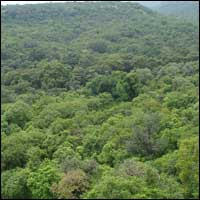The Ministry of Environment and Forests recently released a revised draft policy on inspection, verification, monitoring and overall procedure relating to grant of forest clearances and identification of forests.
In July 2012, the MoEF had constituted a committee under the chairmanship of Additional Director General of Forests (Forest Conservation) and assigned it the task of formulating a draft policy for inspection, verification, monitoring and the overall procedure relating to grant of forest clearances and identification of forests. The task of formulating the draft policy was taken up in accordance with a judgment delivered by the Supreme Court in July 2011.
The committee found that monitoring was the weakest link in the entire forest clearance process and recommended that an effective system be put in place for monitoring of compliance to conditions stipulated in the approvals accorded under the Forest (Conservation) Act, 1980. It also suggested creation of a transparent, effective and unbiased system to facilitate expeditious follow up action in case of non-compliance or violation of the stipulated conditions. With the objective of improving compliance to the conditions stipulated in the approvals accorded under the Forest (Conservation) Act, a system was proposed for self monitoring by the user agency as well as monitoring by the state government and Centre.
On the issue of inspection of forest land proposed to be diverted, the committee was of the view that site inspections could be categorised as per objective of the inspection. The three broad categories suggested include site inspections as a mandatory exercise for submission and processing of proposals for diversion of forest land, site inspections for resolving dispute about status of land and site inspections ordered by the MoEF either Suo Moto or on the advice of Forest Advisory Committee.
With regard to verification of information provided in the applications seeking prior approval of the Centre under the Forest (Conservation) Act, the committee suggested creation of a Geographic Information System based decision support database and making it available to all those dealing with the proposals, both in the central government and the state government. To detect discrepancies, it called for cross checking and comparing the information provided in the proposals with that available in the database by authorities, both in the central government and the state government.
On identification of forests, the committee called for implementation of the directions given by the Supreme Court in the Lafarge judgment and expediting the preparation of geo-referenced district forest maps. Pointing out that in case of some North Eastern states cadastral survey had not been undertaken due to which credible land records were not available, it suggested that the identification of forests, as per dictionary meaning, in these states be based on certain objective parameters. The suggested parameters include stand density (no. of trees per hectare), crown density (percentage foliage cover), minimum extent of contiguous forested area, nature of vegetation (horticulture/forestry), origin (naturally grown or man-made) and an appropriate combination thereof. The committee recommended that all compact patches of minimum one hectare area having crown density more than 30 percent on any day after December 12, 1996, as per the successive state of forest reports, be treated as ‘forest’ as per dictionary meaning even if these areas were not recorded as forest in the government record, unless proved with credible evidence that the vegetation available in such patch was other than the forestry species of natural origin. For monitoring the progress in preparation of geo-referenced district forest maps, the committee called for constitution of a steering committee under the chairmanship of the Director General of Forests and Special Secretary. It reiterated that the directions given by the Supreme Court in the Lafarge judgment should be incorporated in the guidelines and stressed on expediting constitution of the standing site inspection committee at each regional office by the MoEF.
The committee emphasised that for strengthening the existing procedure for grant of forest clearance, the suggestions made for improving inspection, verification, monitoring and identification of forests needed to be implemented expeditiously. For implementation of the measures stipulated in the approval accorded under the Forest (Conservation) Act for mitigating impact of diversion of forest land on flora, fauna and environment, it called on the MoEF to put in place an institutional mechanism for efficient, effective and expeditious utilisation of funds already realised as well as likely to be realised in future.
The MoEF will circulate the report submitted by the committee among all state governments for comments. On receiving the views of the states, the policy will be finalised after consolidating the existing as well as the suggestions received and found acceptable.
Meanwhile, the MoEF has invited comments from all stakeholders on the revised draft policy on inspection, verification, monitoring and overall procedure relating to grant of forest clearances and identification of forests by February 10, 2014.











